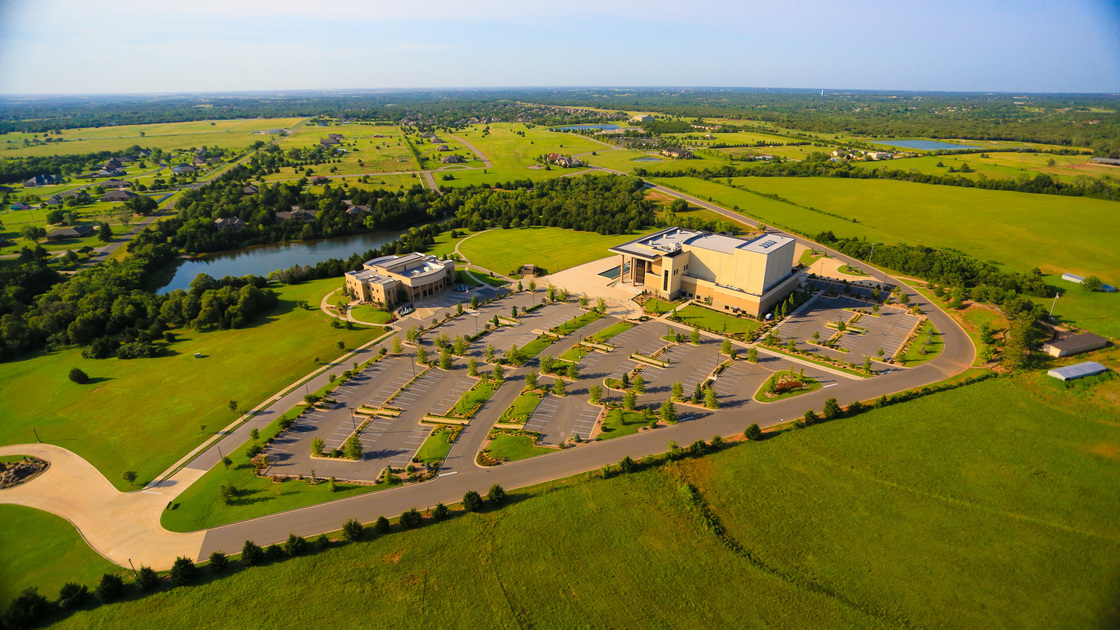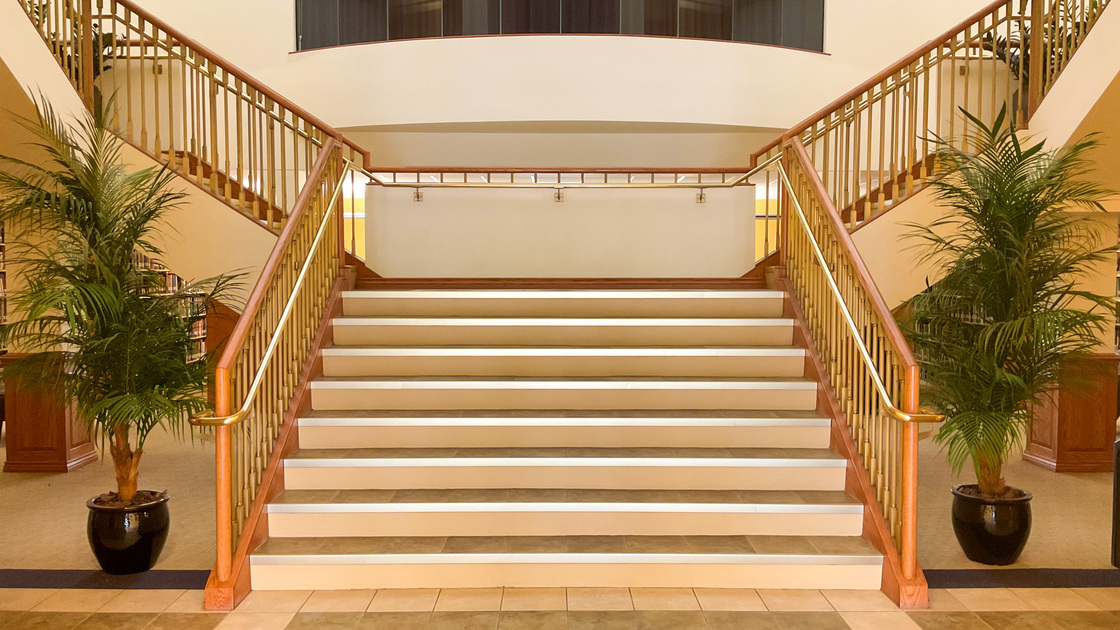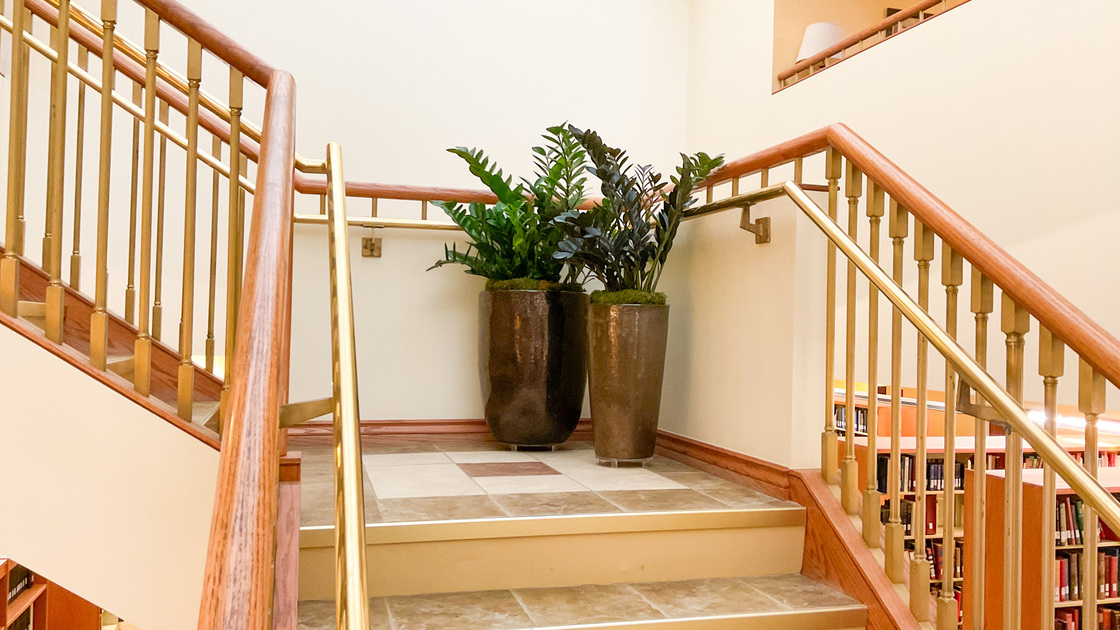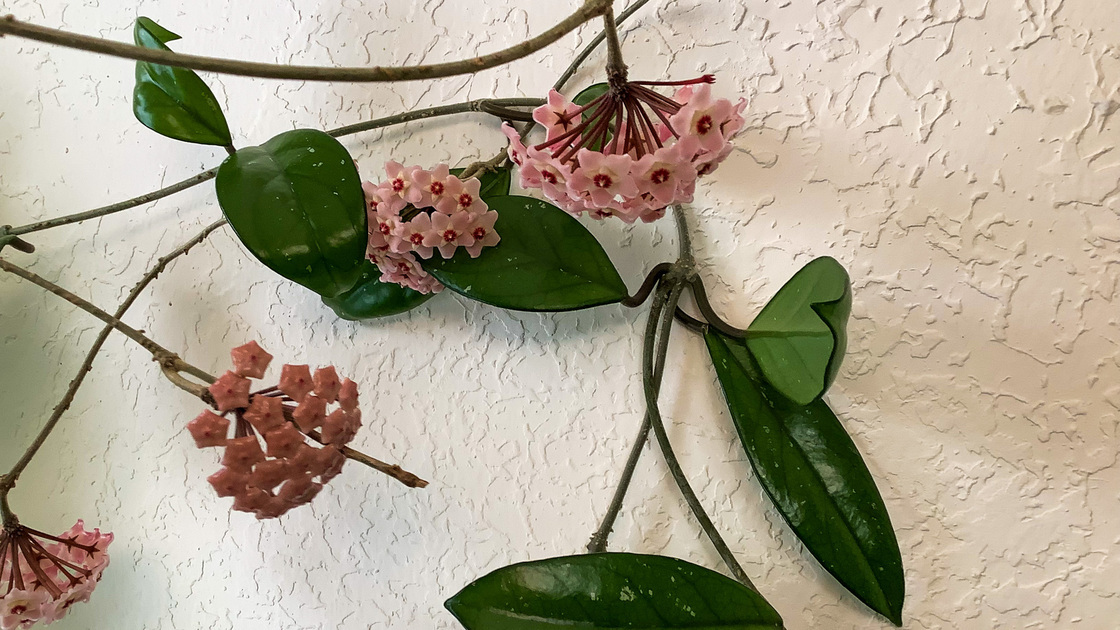OKLAHOMA—On this day in 2000, the Philadelphia Church of God purchased 120 acres of land to add to the existing 38 purchased in June of that year. Twenty-three years later, the campus is sprawling with vegetation and garden beds. Campus buildings are decorated with howe forsteriana (kentia palm), the zamioculcas zamiifolia (ZZ plant), the dracaena fragrans (corn plant), the algonema nitidum (silver bay), the dracaena reflexa var. Angustifolia (Madagascar dragon tree) and the rhapis excelsa (broad leaf lady palm), previously maintained by a horticulture service but now taken care of by Edmond member Dawn Krueger.
The exterior vegetation of campus is maintained by a landscaping crew of college students and graduates. In addition to the regular mowing, trimming, watering and weeding of the garden beds and fields that decorate the campus, the crew is frequently seen planting maples, birches, evergreens and cover grasses to create more work for themselves and more enjoyment for everyone else. Cedars, spruces, junipers and pines provide a hint of year-around color, but in springtime when the yellow daylilies, purple irises and emerald creeping phloxes bloom, the campus becomes vibrant.
Inside the structures that facilitate the many operations of headquarters, potted plants decorate the hallways, staircases and corners of the buildings. Krueger has been growing and cultivating plants for many years. To give you an idea of her knowledge on the subject, she is still caring for the first plant she was given around 45 years ago called a Rope Hoya, also known as a “porcelain flower,” an indoor plant with waxy flowers that give off a light fragrance when they bloom. When it comes to campus horticulture, Krueger spends anywhere from three to 12 hours a week watering, washing and trimming the six species of plants in Armstrong Auditorium and the Hall of Administration (HOA).
All 22 plants at the Auditorium are real, but only two of the HOA plants are real. Some need to be watered every week. Others can go for almost two weeks, but Krueger still checks on all the plants every week to see if they are in need. The leaves of all plants also need to be cleaned, ideally every month. This can be done with warm water and a micro fiber rag, or with natural soap or vinegar mixed with water. She rubs the leaves top and bottom and then wipes the stem, rinsing the rag as she goes. Sometimes the leaves need to be trimmed of brown spots or damage, and certain plants do well to have their soil changed every year or two, preferably in the spring or fall. For the larger plants, she uses a small step latter to reach the top.
Krueger once spent almost three hours changing the soil on a plant. “I had to take the old soil out that had hardened, and the roots were a solid mass. I had to pry the roots apart with an ice pick. I had to peel a layer of old growth off the roots, then had to soak the roots, spray a natural spray for bugs and mold, then repot it,” she explained.
Krueger also said that the water used is very important, as chemicals in water can damage the plants and kill them. “We had to have an extra filtering system put in upstairs at the Auditorium for the plants by our maintenance department.”
Since she began caring for campus plants, Krueger has moved some of them to new locations, considering the amount of sunlight they need rather than just what “looks good.”
But campus isn’t the only place full of plant life. Many Edmond members have begun filling their houses with plant life and developing outside gardens of their own. Several of them expressed how “rewarding” and “fulfilling” working with plants is.
Herbert W. Armstrong College graduate Arianne Bush said that she and her husband “often talk about how, when we are working in our gardens and yard, we can see why God told us to dress and keep.” She said it is “wonderful to pick a fresh fruit or vegetable from the vine that you were able to grow yourself.”
Another graduate, Breanna Jacques, also expressed how fulfilling it is to eat home-grown produce. “The ornamental plants that we have, both outdoors and inside, contribute to a peaceful and pretty atmosphere, which I think is valuable for the whole family,” she said. She said that her three-year-old daughter Summer loves to dig around and “help” in the garden and flowerbeds.
However, cultivating plants in Oklahoma is “not all sunshine and roses” as the saying goes. Many members said that the extreme weather conditions and poor soil quality are the biggest challenges.
“Oklahoma is known for extremes in weather which many plants do not like: Hot, cold, wind, hail, too much rain, not enough,” said Edmond member Kristen Rambo. She said that she is slowly learning ways to combat these challenges.
Another member, Alisha Brandon, said that bugs are another challenge when gardening, especially vegetable gardening. However, she has found that companion planting, which according to American Heritage Dictionary is “the cultivation of different species of plants together in the same area for the purpose of benefiting one or more of them,” is an effective way to combat the pests.
Brandon said that although she grew up on a farm with a huge garden, her own interest in plants and gardening began when she got married and had her first home. “I wanted to improve the landscape and atmosphere of the backyard with the ultimate goal of having a place that was beautiful, that I could enjoy with my family,” she said.
Jacques said that she has had more success with flowers and ornamental plants. As far as garden plants, she said that she likes to stick with a few staple plants that she knows will survive the summer as long as they are watered regularly, such as tomatoes and peppers. Bush said that the biggest gardening success her family had was a harvest of at least 100 peaches from a tree in the backyard that had previously struggled to produce because of pests, wind or lack of water. Rambo said that despite last year being rough, her family had a large crop of okra and tomatoes that she canned and stored up for the winter.
The members had recommendations to those just starting out, whether planting inside or gardening outside. Rambo said that the soil is so much more than something to hold the plant. She suggested reading into the Ruth Stout method, the success of which was confirmed by an accidental discovery made by the agriculture department at the Big Sandy campus of Ambassador College. This approach involves seasoning an area with cardboard and straw and spreading a layer of kitchen scraps.
Bush suggested that if gardening seems daunting, just go for it. “Plants are generally a lot tougher than you may think,” she said.
Another graduate, Rachel Tremblay, said that research is important as well. “There are a lot of tips and tricks online to growing plants here. Get specific in your research. The more you know, the better your success will be.” She also recommended having a plan for what to do with your produce.
Jacques suggested starting small. “Research and choose just a few plants that do well in Oklahoma, and then focus on those until you are more experienced. Then you can add more varieties of plants in following years as you learn more,” she said.
Krueger has more than 50 plants in her home, from small cacti to large rubber plants. Here are some plant recommendations she gives for easy-to-care-for house plants.
Rope Hoya
Light—Partial sun to full sun.
Water—Every two to three weeks. Check for dryness.
Pothos
Light—Partial sun, full sun or shade (this plant is hard to kill).
Water—Every two weeks.
Snake plant
Light—Partial sun, full sun or shade.
Water—Once a month (Do not overwater).
ZZ plant
Light—Low light or shade.
Water—Once a month (Do not overwater).
Prayer plant
Light—Low light.
Water—Once a week, unless too moist.
Schefflera
Light: Indirect light or partial sun.
Water—Once a week.
Spider plant
Light—Low to bright light.
Water—Once a week.
Peace lily
Light—Low light or shade.
Water—Once a week.
Monstera
Light—Low light, indirect light or full sun.
Water—Every 10 days or two weeks.
Rubber plant
Light—Bright, indirect sun.
Water—Every two to three weeks.




